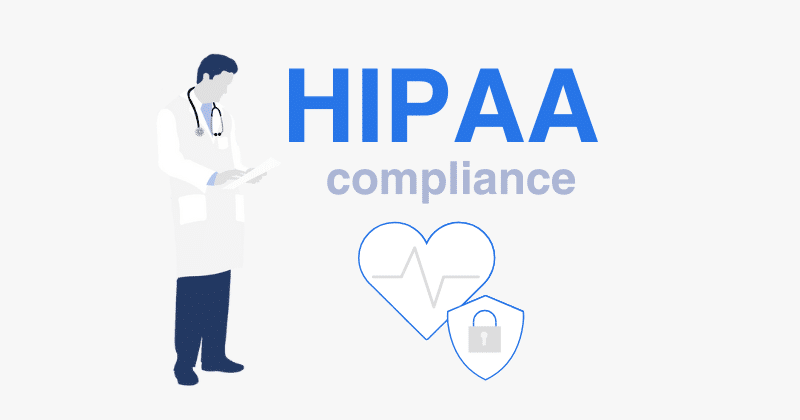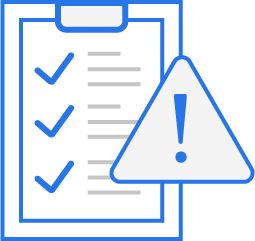Achieving and maintaining Payment Card Industry Data Security Standard (PCI DSS) compliance can feel like navigating a minefield, right? You’re constantly dodging new threats and trying to keep up with evolving requirements. PCI DSS v4.0.1, the latest version, introduces significant changes and mandates that require a cohesive, well-integrated approach to data security. A fragmented strategy simply won’t cut it; organizations need a unified approach to protect sensitive payment card data, reduce risk, and ensure ongoing compliance. Think of it like this: you wouldn’t try to build a house with only half the blueprints, would you? A strong data security strategy needs to be just as complete and carefully planned.
This article breaks down the key elements of PCI DSS v4.0.1 and highlights how Compliance Labs’ unified strategy can help you navigate these challenges effectively. We’ll explore the critical components of compliance, the risks of a disjointed approach, and actionable steps you can take to secure your data environment. Let’s dive in!
The Evolving Threat Landscape: A Call for Unified Defense
Indeed, the cybersecurity world never stands still; rather, it is constantly evolving. Attackers are constantly evolving their tactics, techniques, and procedures (TTPs), making it increasingly difficult for organizations to stay ahead of the curve.
As the threat landscape evolves, so does the PCI DSS standard. Version 4.0.1 is more comprehensive and emphasizes a risk-based approach to security. This shift requires organizations to not only implement specific controls but also to understand the “why” behind them and adapt their security measures accordingly. Moreover, with increased reliance on Third Party Service Providers, you must take the responsibility to monitor the TPSPs performance and validate controls.
Key Components of a Unified PCI DSS v4.0.1 Compliance Guide
A truly unified PCI DSS v4.0.1 compliance strategy encompasses the following key components. Consider this your essential checklist for a secure payment card environment:
-
-
Comprehensive Risk Assessment (PCI DSS Requirement 12.2): Begin by identifying potential threats and vulnerabilities across your entire cardholder data environment (CDE). A comprehensive assessment is not just a checklist; instead, it’s an in-depth analysis of your organization’s unique risk profile. This includes reviewing data flow diagrams to understand where cardholder data is stored, processed, and transmitted. By understanding the potential risks, you can prioritize your security efforts and allocate resources effectively. It also includes identifying and rating known Common Vulnerabilities and Exposures (CVE) on your assets. You can learn more about identifying and mitigating CVEs from the CISA Know Exploited Vulnerabilities Catalog.
-
Actionable Tip: Don’t just run a scan. Treat your Risk Assessment like evaluating the land before building a house. You need to know where the potential problems are before you start construction.
-
-
Robust Security Policies and Procedures (PCI DSS Requirement 12.1): Develop clear, documented policies and procedures that address all applicable PCI DSS requirements. Ensure these policies are regularly reviewed and updated to reflect changes in your business operations and the threat landscape. These policies should cover areas such as access control, data protection, incident response, and vulnerability management.
-
Actionable Tip: Think of your security policies as the rules of the road. Everyone needs to know them and follow them to avoid accidents.
-
-
Secure Network Configuration (PCI DSS Requirement 1): Install and maintain a firewall to protect cardholder data. Ensure all network devices are configured securely, and restrict traffic to only necessary services and ports. Network segmentation is also critical to isolate the CDE from other parts of the network, reducing the scope of PCI DSS compliance efforts.
-
Actionable Tip:<span class=”ng-star-inserted”> Secure your network like you’d secure your home: strong locks (firewalls), limited access (restrict traffic), and a clear separation between valuables (cardholder data) and other belongings (network segmentation).
-
<li class=”ng-star-inserted”>
-
Data Protection Measures (PCI DSS Requirements 3 & 4): Protect stored cardholder data using encryption, truncation, masking, or tokenization. Encrypt cardholder data during transmission over open, public networks. To ensure security, encryption should use strong cryptographic algorithms, and furthermore, key management practices should follow industry standards, such as those outlined by NIST (National Institute of Standards and Technology). Tokenization should provide protection to limit the inclusion and behavior of some third-party elements. For existing code elements, ensure the code is evaluated for all security parameters to ensure the CHD and any sensitive SAD data protection includes the right safety procedures.</span>
-
Vulnerability Management (PCI DSS Requirement 6): Develop and maintain secure systems and software. Regularly scan for vulnerabilities and apply security patches in a timely manner. A robust vulnerability management program involves more than just running scans, it requires a proactive approach to identifying, prioritizing, and remediating vulnerabilities. Prioritize critical and high severity vulnerabilities and create a streamlined process to ensure all of those vulnerabilites have been remediated. This process could be automated by posture and vulnerability management software.
-
Actionable Tip: Patch your systems like you get regular checkups from the doctor. Catching and fixing problems early prevents bigger issues down the road. Citing the Verizon 2024 Data Breach Investigations Report, a significant number of breaches are due to unpatched vulnerabilities. This highlights the critical importance of keeping your systems up-to-date.
-
-
Software Bill of Materials (SBOM): Many third-party software products have had a tremendous impact on the world of cybersecurity. Specifically, these tools are used to scan CHD for security purposes and ensure that the proper steps are being performed in an adequate manner; therefore, SBOM is a crucial aspect to the current threat landscape for security and data.</span></span>
-
Strong Access Control Measures (PCI DSS Requirements 7 & 8): Restrict access to cardholder data by business need-to-know. Identify and authenticate access to system components. Implement strong authentication mechanisms, such as multi-factor authentication (MFA), to prevent unauthorized access. Privileged accounts are the most targeted and are often targeted in breaches due to the level of system access that can be achieved through this technique.</span></span>
-
Actionable Tip: MFA is like adding a second lock to your front door. It makes it much harder for intruders to get in.
-
-
=”ng-star-inserted”>Zero Trust Network Access (ZTNA): As the world is evolving, more and more organizations are taking remote calls and remote actions to ensure CHD is correct. However, allowing unmonitored access to networks creates more problems, thus a ZTNA tool is crucial for helping with access security and permissions. It provides control to ensure all system and user access is being closely tracked for the CHD.
-
Regular Monitoring and Testing (PCI DSS Requirements 10 & 11): Track and monitor all access to network resources and cardholder data. Regularly test security systems and processes through vulnerability scanning and penetration testing. This regular monitoring and testing provides ongoing assurance that security controls are effective
-
<span class=”ng-star-inserted”>Threat Detection and Logging (Requirement 10): Create CHD audit log trails in case there is a potential security incident or vulnerability. This creates a quick recovery mechanism for organizations to have security logs of all data, giving more opportunities for early incident detection. Guidance on establishing effective logging practices can be found within the NIST Special Publication 800-92r2.
-
<strong class=”ng-star-inserted”><span class=”ng-star-inserted”>Incident Response Plan (PCI DSS Requirement 12.10): Establish and maintain an incident response plan to prepare for and respond to security incidents. The incident response plan should be reviewed regularly, and incident response drills should be conducted to test the plan’s effectiveness. Create a remediation plan and ensure that it is a living document that is continuously updated.
-
<span class=”ng-star-inserted”>Third-Party Security Assurance: Because entities and TPSPs take part in CHD, you should use written acknowledgement, and consequently, TPSPs should provide written acknowledgment so that you both protect CHD. In addition, ensure the responsibility of third parties, especially regarding internal controls, to make sure the entity is safe and in accordance with the latest industry standards.</span></span>
ss=”ng-star-inserted”>The Perils of a Disjointed Compliance Data Strategy
Attempting to address PCI DSS v4.0.1 requirements with a fragmented security posture can lead to several critical problems. It’s like trying to play an orchestra with everyone improvising their own part – chaos ensues!
-
lass=”ng-star-inserted”>Increased Risk of Data Breaches: Gaps in security controls create opportunities for attackers to exploit vulnerabilities and compromise sensitive data. For example, a lack of endpoint protection, data leak prevention strategies, or robust network security can give attackers the foothold needed to compromise your systems. Therefore, the importance of incident response planning is also highlighted.
-
>Inconsistent Security Controls:<span class=”ng-star-inserted”> When different departments or teams implement security measures in isolation, the result is often inconsistent application of controls, making it difficult to maintain a strong security posture. This lack of a centralized view can lead to missed vulnerabilities and misconfigured systems; hence, increased risk.
-
Compliance Challenges:</strong> A fragmented approach makes it difficult to demonstrate compliance to auditors, resulting in failed audits, fines, and reputational damage. PCI DSS assessments look at th</span>e big picture, and inconsistent or missing controls can raise red flags. It’s crucial to have clear documentation and evidence to demonstrate that all applicable requirements are being met. Detailed guides on preparing for a PCI DSS audit.
-
Increased Costs: Siloed security solutions often lead to redundancy and inefficiency, resulting in higher overall security costs. A unified strategy eliminates these redundancies and streamlines security operations; therefore,it results in cost savings.
-
=”ng-star-inserted”>Operational Complexity:</span> Managing multiple, disparate security tools and processes increases operational complexity, making it difficult for security teams to effectively monitor and respond to threats. A unified approach simplifies security operations and provides a single pane of glass for managing security controls.
Actionable Steps Towards a Unified Compliance Data Strategy
Ready to take control of your PCI DSS v4.0.1 compliance efforts? Here are some actionable steps you can take today:
Understanding Your Current State
-
Conduct a Gap Analysis: Evaluate your current security posture against PCI DSS v4.0.1 requirements to identify any gaps. Therefore, use the PCI DSS Requirements and Assessment Procedures document as a guide.
-
Prioritize Remediation Efforts: Focus on addressing the most critical vulnerabilities and gaps first. Use the Risk Assessment Guidelines from the PCI SSC to guide your prioritization. Look at all CVEs for high-end systems; then, prioritize those quickly in your timeline for deployment and remediation.
Implementing Key Security Measures
-
lass=”ng-star-inserted”>Implement a Unified Security Platform: Consider adopting a unified security platform that integrates multiple security capabilities, such as vulnerability management, SIEM, and access control. This will simplify security operations and provide a centralized view of your security posture.
-
Train Your Employees: Provide regular security awareness training to employees, emphasizing their role in protecting cardholder data. Therefore, use materials from vendors to provide training on how to properly protect sensitive information.
Validating and Maintaining Compliance
-
Engage a Qualified Security Assessor (QSA): Partner with a QSA to conduct an independent assessment of your PCI DSS compliance. This will provide an objective assessment of your security posture and identify areas for improvement.
-
lass=”ng-star-inserted”>s=”ng-star-inserted”>Automate Patching and Updates: As highlighted by the NIST Special Publication 1800-31, automate patching software to apply patches quickly and efficiently. This will reduce the attack surface, and consequently, minimize the risk of exploitation.
-
lass=”ng-star-inserted”><span class=”ng-star-inserted”>Implement Third Party Risk Management: To ensure that TPs are compliant, follow the direction from Third-Party Security Assurance Information Supplement; additionally, ensure you have written acknowledgment from the TPSPs confirming that they are responsible for the security of data that the Customer has.</span></span>
-
lass=”ng-star-inserted”><strong class=”ng-star-inserted”><span class=”ng-star-inserted”>Incorporate 3D Secure: Ensure that any payment transactions are using the latest industry standards to prevent credit card fraud and create a safe payment processing environment; furthermore, implement the best practices set up for end users.</span></p>
Future-Proofing Your Compliance Data Strategy
Looking ahead, organizations need to consider emerging trends such as generative AI, the evolving threat landscape, and supply chain security. You also need to use multiple levels of security, including protection of operating systems and data protection. It’s about building a robust and adaptable security posture that can withstand future threats.
-
lass=”ng-star-inserted”>ass=”ng-star-inserted”>Generative AI: As it proliferates, it’s essential to ensure that AI systems do not inadvertently expose cardholder data or introduce new vulnerabilities. Establish clear data governance policies and then implement access controls to protect sensitive data. As discussed in my article “Safeguarding 2024 Elections from Cyber Threats,” Generative AI is innovative but requires safeguards and policies to prevent misuse.</span></span>
-
Evolving Threat Landscape: Be proactive in monitoring the threat landscape and adapting your security measures accordingly. Subscribe to threat intelligence feeds and participate in industry forums to stay informed. Employ threat protection features such as anti-malware, event monitoring, and firewalls to oversee events and potential threats.
-
Supply Chain Attacks: Develop a robust third-party risk management program to assess the security practices of your vendors and suppliers. Entities and TPSPs handle CHD. Therefore, use written acknowledgement. TPSPs should also provide written acknowledgement to protect CHD. Additionally, ensure third-party responsibility, especially for internal controls, aligning the entity with industry standards.
Conclusion: The Power of a Cohesive Approach
PCI DSS v4.0.1 compliance is not just a checkbox; rather, it’s an ongoing commitment to protecting sensitive payment card data. By adopting a unified strategy that integrates key security capabilities and incorporates expert guidance, you can reduce risk, improve compliance, and build a more resilient security posture. It’s about building a culture of cybersecurity; specifically, it’s about ensuring everyone understands their role in protecting sensitive data. Remember, a strong security culture starts with awareness, education, and a commitment to continuous improvement. Cybersecurity is not just a technical issue; it’s a business imperative.






